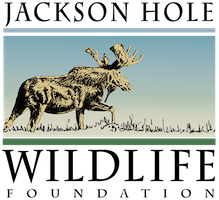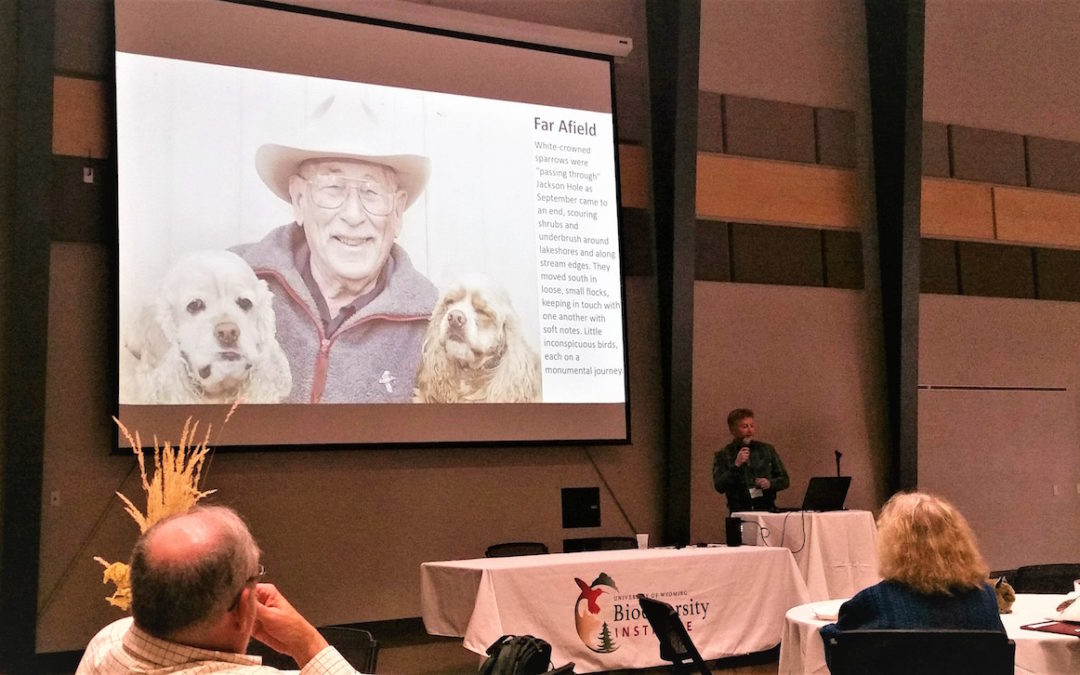
by jhwildlife | Dec 16, 2016 | Blog, Nature Mapping Jackson Hole
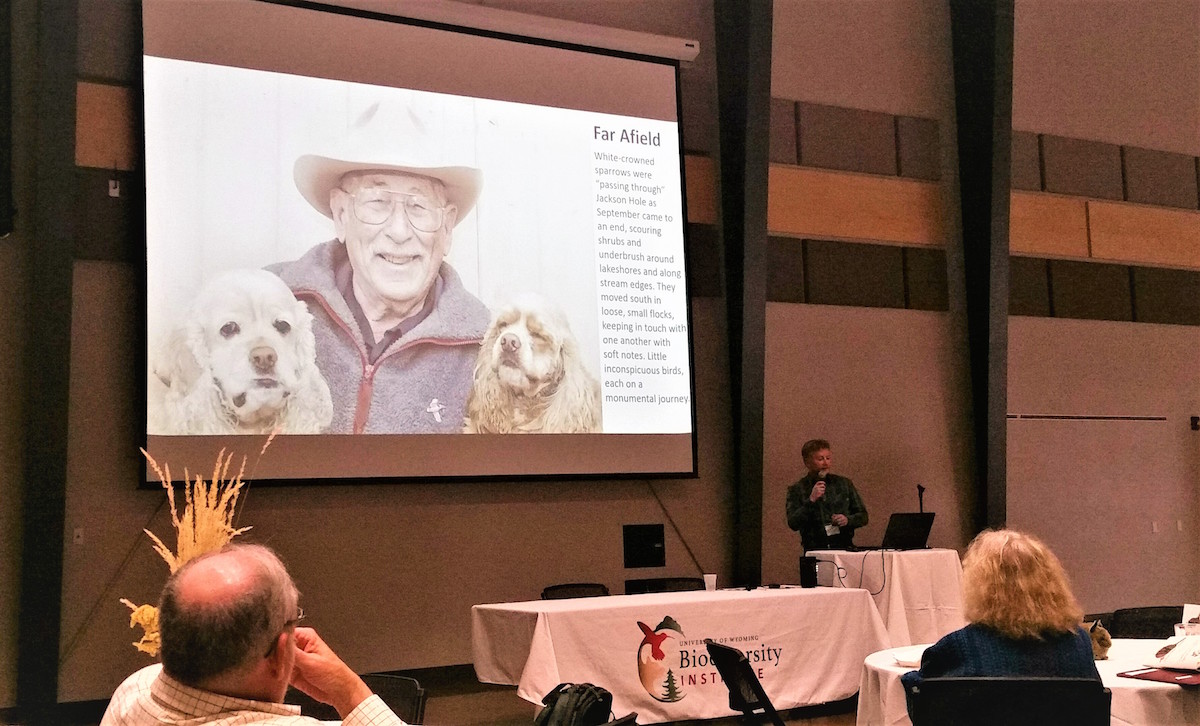
JHWF ED Jon Mobeck presents on the artistry of citizen science and the conservation legacy informing Nature Mapping Jackson Hole.
Earlier this month the University of Wyoming Biodiversity Institute hosted the first ever Wyoming Citizen Science Conference in Lander. Several representatives from the Jackson Hole Wildlife Foundation (JHWF) and Nature Mapping Jackson Hole (NMJH) attended the conference with the aim of learning from other citizen science practitioners across the state and of sharing what we have learned from the past eight years of running our program. The conference proved to be very valuable.
The variety of citizen science programs represented was immense and indicative of the breadth and depth available in Wyoming. For example, modeled on NMJH, Laramie sponsors both a winter and summer “Moose Day” with up to 38 transects and over 80 volunteers. Rocky Mountain Amphibian Project conducted a survey of chytrid fungus in frogs and toads throughout the state, including Teton County. A PhD student studied how geo-tagged imagery can enhance surveys by providing follow-up ID, unbiased assessments, and long-term documentation of plants and animals. Museums around the country are recruiting citizen scientists to review historical specimens, including label information on University of Wyoming herbarium sheets. Road Scholar (formerly Elderhostel) volunteers are chronicling archaeological sites in the Wind River Mountains. Associated with the North American Butterfly Association, twenty citizen scientists have tracked approximately 28 species of butterflies in a count circle in Lander for a decade. These are only a few of the amazing projects presented.
The core focus of the conference was on the problems and solutions that citizen science program managers and volunteers face. Several speakers talked about the difficulty of designing data sheets that capture essential information while also being user–friendly. Project directors need to enter and analyze data relatively quickly to keep citizen scientists engaged: volunteers are rewarded by seeing results of their work. Social occasions help build a concerned community. While ensuring quality remains challenging, with sufficient training citizen scientists produce solid scientific data. For instance, the Rocky Mountain Amphibian Project compared the quality of data collected by volunteers vs. bio-techs with very similar results. In short, presenters concluded, “Citizen scientists rock!” And we have a lot to learn from each other.
Our role in the conference:
On the whole, 65 conference participants came from across Wyoming, and even Idaho and Vermont too – all from a mix of individual citizen scientists, nonprofit organizations, primary and higher educational institutions and federal agencies.
JHWF was a silver-level sponsor for the Wyoming Citizen Science Conference, and our Associate Director Kate Gersh served on the program planning committee, which helped select presenters and set the agenda. Over the course of nearly two full days, here are a few programs that were presented by JHWF board, staff, and partners:
- “Lessons Learned: Eight Years of a Citizen Science Program in Jackson Hole” – Aly Courtemanch
- “Values Driving Conservation: Citizen Science as Interactive Art” – Jon Mobeck
- “Fundraising for Citizen Science: Experiences and Advice” – Kate Gersh, Anya Tyson, Wendy Estes-Zumpf, Frances Clark (in absence)
- Poster Presentation: Nature Mapping Jackson Hole: Mapping Community Solutions ̶ Kate Gersh
- Poster Presentation: Monitoring Wildlife Crossings on South Highway 89 ̶ Paul Hood
- “Bringing Citizen Science into the Backcountry: Emerging Best Practices to Engage Outdoor Education Organizations” – Anya Tyson
- Screening of Far Afield: A Conservation Love Story
Importantly, one of NMJH’s lead volunteers Tim Griffith attended the conference and contributed much to the conversation. Based on the latter and the abovementioned, we believe we successfully expanded awareness of Nature Mapping Jackson Hole statewide and regionally, thereby opening opportunities for greater community connections. This was a proud experience for us and we feel honored to have represented on behalf of everyone who has been involved with NMJH.
Next steps for Citizen Science
What comes next? Well, based on survey responses, conference participants have expressed a desire for open communication and collaboration between citizen science groups, as well as, one central location to list project information. The Biodiversity Institute is excited to share that they have begun the process of planning a website to act as a citizen science clearing house. It will provide a forum for discussion around citizen science projects in our region and to glean tips and ideas for best practice. It will also help to incorporate our projects into the classroom. In addition, the idea of a dedicated newsletter for citizen science groups in Wyoming is under discussion.
The hope is that this conference will take place again next year, giving us the opportunity to follow-up on tactics and ideas that were shared. We have much to learn still about volunteer recruitment and retention, fundraising, risk management, data collection and submission, data sharing and dissemination, evaluation and the list goes on. JHWF will be sure to keep you updated on new developments as they come about. Stay tuned as we continue to explore the potential of all that Nature Mapping Jackson Hole has to offer!
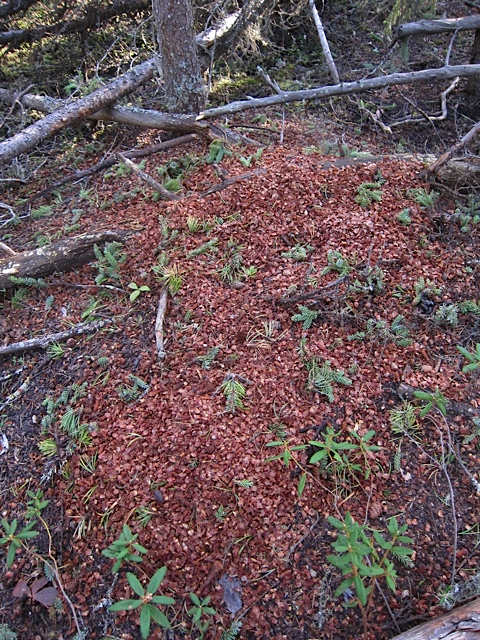
by jhwildlife | Oct 11, 2016 | Blog, Nature Mapping Jackson Hole
By Frances Clark, Nature Mapper and Botanist
Hiking under Engelmann spruce trees has been hazardous this fall. Light brown cones, 4-6 inches long and sticky with pitch, pour down amidst harsh chattering from above. I have counted one cone falling every 3-5 seconds, another time I couldn’t keep track of the barrage. Cones landed on my head, bounced and then lay strewn about my feet. Cone storms. What s going on?
 Red squirrels are taking advantage of a “mast year.” Last spring, you may remember, prodigious amounts of pollen wafted on the wind. Some of that pollen landed on tiny female cones, which have matured, securing two winged seeds under each scale. Spruce trees are now laden with dangling cones from the top down. This abundance occurs every 2-3 years in spruce. The intervening times are lean.
Red squirrels are taking advantage of a “mast year.” Last spring, you may remember, prodigious amounts of pollen wafted on the wind. Some of that pollen landed on tiny female cones, which have matured, securing two winged seeds under each scale. Spruce trees are now laden with dangling cones from the top down. This abundance occurs every 2-3 years in spruce. The intervening times are lean.
Well adapted to feast and famine, red squirrels form large middens—stores of thousands of cones. They efficiently sample and then harvest trees with the most seed energy per cone and with the greatest cone abundance. Middens lie at the center of the most productive group of trees.
A midden can best be described as several inches of cone scales and cores heaped over mineral soil, forming mounds up to several feet high and wide. The loose surface often has shallow holes in it. In the mineral soil below, there may be a network of tunnels. Squirrels pack several cones, pointed end down, into holes which will be covered eventually by more scales and cores. In this cool and moist environment—a humidor—cones will remain unopened for at least 1-2 seasons until the squirrels retrieve them. When they do, squirrels eat cones like corn-on-the-cob, scattering scales everywhere while consuming the nutritious seeds. It has been calculated that squirrels consume 50-156 cones a day and stash 10s of 1000s in a midden in a good year. No wonder red squirrels are so territorial – chattering loudly at any perceived threat and dashing out to their territorial boundary: they are defending their stash for winter survival.
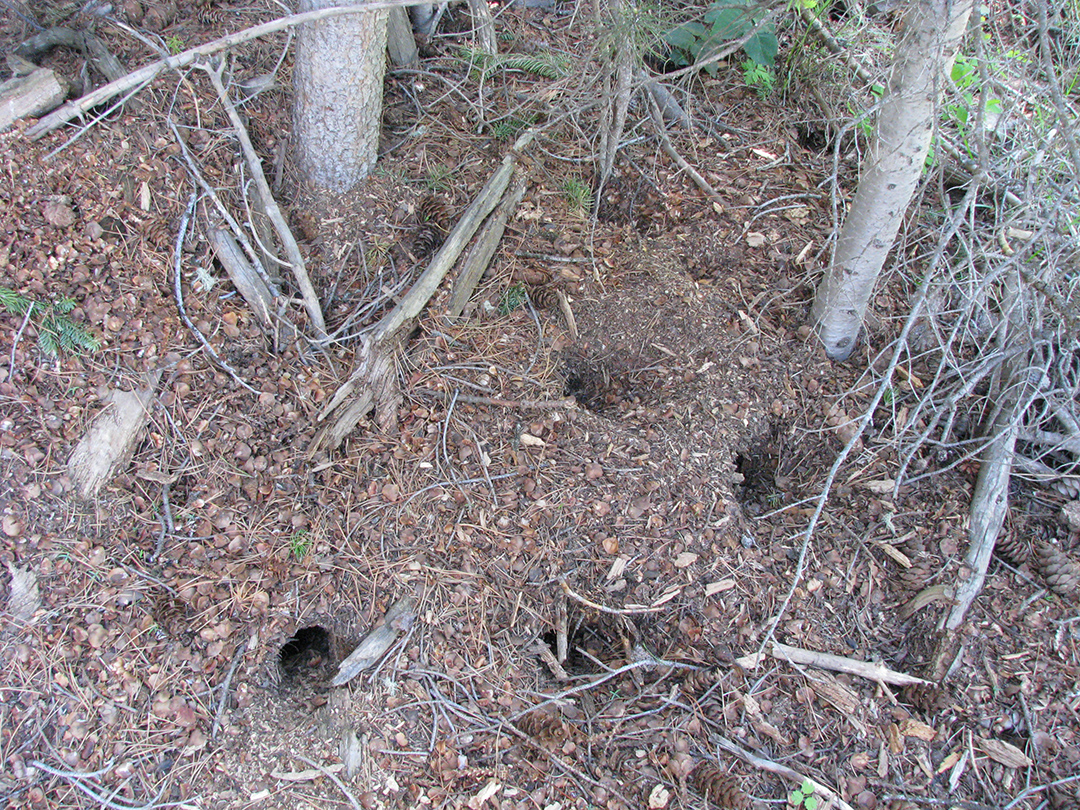
While cones are preferred, in lean times and in summer, red squirrels will eat other items. Fungi are particularly relished, with parts hung up in trees to dry. They eat buds, fruits, sap, even cambium and phloem, as well as eggs and insects. Small plant parts placed in middens may help train young squirrels for future hoarding. In different years, squirrels may harvest cones of Douglas firs – which have mast years every 4-5 years, or as back up, serotinous cones of lodgepole pine. Lodgepole pine cones are often gathered on top of middens. They do not open even when dry, are too tough for other predators to eat, and seeds remain viable for years. The squirrels don’t need to spend extra energy to bury them.
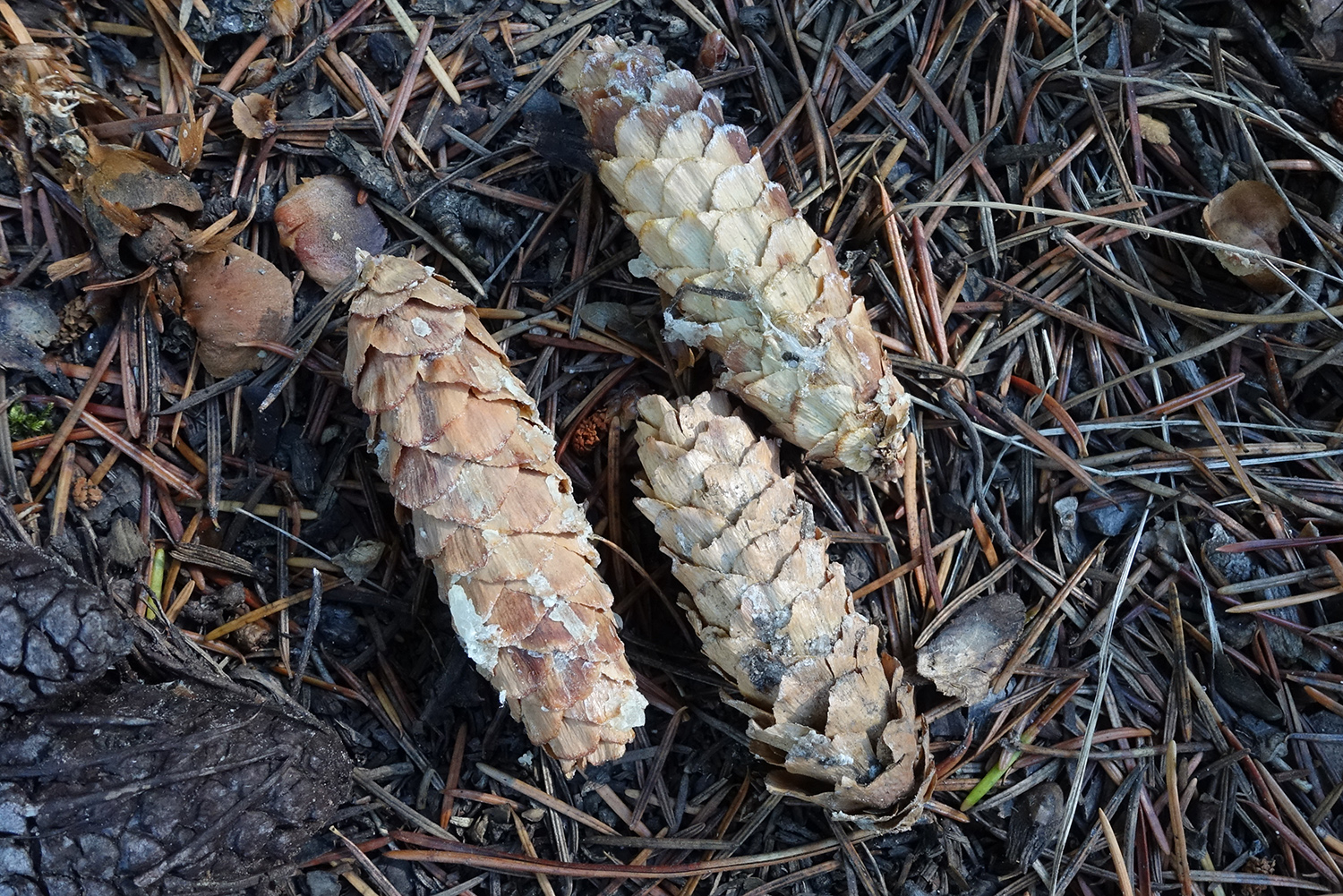
The other day, walking around Moose Ponds, I heard several red squirrels churring within a stand of battered old spruce and fir trees. Their density indicated good habitat. Tangles of downed limbs and saplings surrounded straight, scaly boles clad in densely needled branches, which intertwined to form a closed, irregular canopy. Engelmann Spruce reach peak production at 150-200 years and provide diverse cover, escape routes, and nesting sites. Old growth trees are excellent for red squirrels.
As red squirrels are active all winter, nesting sites are vital for thermal regulation. Tree squirrels prefer natural cavities, but these are often in short supply so instead squirrels will build a nest of leaves and grass 12 to 60 feet off the ground. Other options include “witches brooms,” an aberrant growth pattern where twigs are unusually dense. They will also burrow into tunnels under their middens for warmth and safety.
Nest sites are located within 100 feet of larders so squirrels can readily defend and retrieve their stores. Circular territories may be 1-2 acres centered around a midden. I nature mapped six squirrels – six territories – on my route past Moose Ponds. While dutiful, I wish now I had taken more time in this rough old patch of forest to see where the middens and nests might be.
Predators come from air or ground. Squirrels may have different calls depending on whether or not a threat is aerial or terrestrial. One study indicates that red squirrels produce a high frequency, short “seet” sound similar to alarm calls of birds. This sound is hard for raptors, such as Goshawk, Great Horned Owl, or Red-tail Hawk , to locate or even hear. A louder bark call is used for overland threats, such as a Pacific (pine) marten (12-20% of marten diet is red squirrels), weasels, or fox. Once alerted, squirrels scramble and hide in dense vegetation.
Between predation and starvation, only 25% of squirrels survive into their second year. Females are in estrus for one day only in early spring. Many males, one dominant in the lead, will give chase and several may succeed in copulation on that one day. In just over a month, the female gives birth to an average of four young which will be independent in another 70 days, by early fall. While mothers may share a territory with daughters, they kick out sons who must then find and defend their own territories by winter. Often the most successful males have ventured the farthest to find a relatively large territory containing an abandoned midden. Midden sites are often used by many generations. In autumn, youngsters and seasoned squirrels are particularly territorial, defending boundaries while gathering cones, which is why they are so vociferous.
Red Squirrels are the most frequently Nature Mapped small mammal with 305 observations over the last seven years. Even so, many of us pass them by – unrecorded – on our hikes. In your next excursions through a conifer forest, listen for chatter. Can you hear differences in their calls? Can you discover a midden nearby? Does a squirrel bound toward you to defend its territory or scurry up a tree or down into a tunnel to escape? Can you find its nest? All these behaviors are fascinating to watch while you may, or may not, log a new Nature Mapping observation.
References:
Animal Diversity Web ADW: Museum of Zoology University of Michigan. Tamiasciurus hudsonicus Red Squirrel. Accessed 10.8.16: http://animaldiversity.org/accounts/Tamiasciurus_hudsonicus/
Finley RB. Cone caches and middens of Tamiasciurus in the Rocky Mountain region. Misc. Publ. University of Kansas Museum Natural History. 1969;51: 233–273. https://archive.org/stream/cbarchive_36740_conecachesandmiddensoftamiasci1969/conecachesandmiddensoftamiasci1969 – page/n17/mode/2up
Greene E. Meagher T. 1998. “Red squirrels, Tamiasciurus hudsonicus, produce predator-class specific alarm calls.” Animal Behavior. 1998 Mar; 55(3): 511-8. Accessed through: https://www.ncbi.nlm.nih.gov/pubmed/9514668
Steele, M.A. 1998. “Tamiasciurus hudsonicus” Mammalian Species 586, pp. 1-9. : published by the American Society of Mammalogists. http://www.science.smith.edu/msi/pdf/i0076-3519-586-01-0001.pdf
Streubel, D. P. 1968. “Food storage and related behavior in red squirrels (Tamiasciurus hudsonicus) in Interior Alaska.” Masters Thesis. University of Alaska. Source: http://www.arlis.org/docs/vol2/hydropower/APA_DOC_no._3351.pdf
U.S. Forest Service data base: http://www.fs.fed.us/database/feis/animals/mammal/tahu/all.html
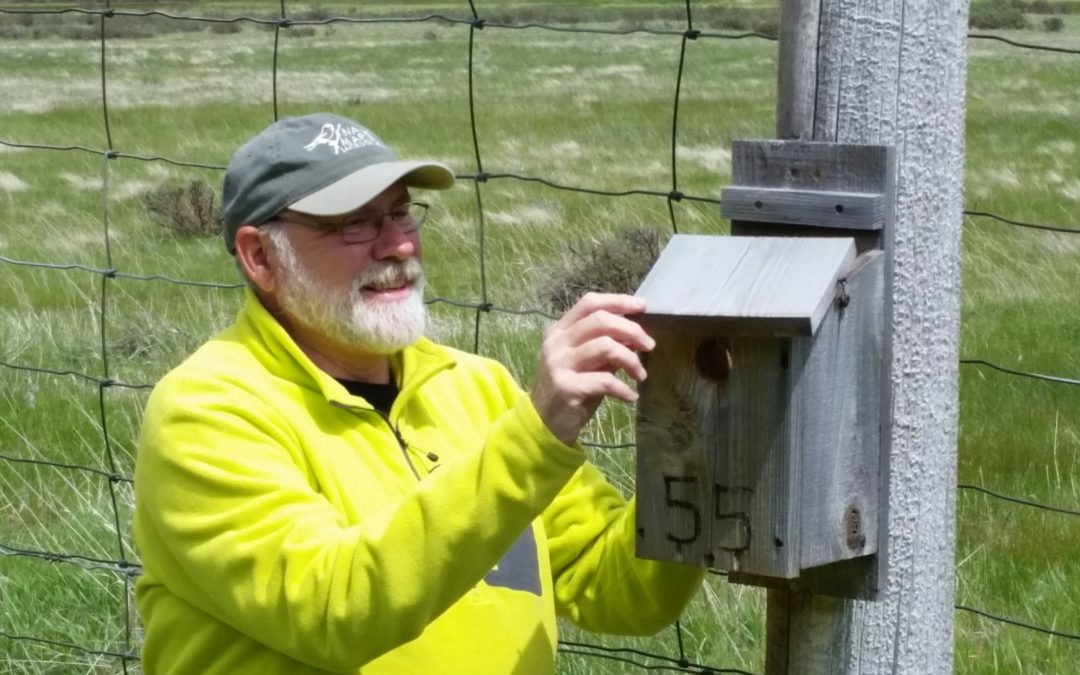
by jhwildlife | Jun 1, 2016 | Blog, Nature Mapping Jackson Hole
We checked one nest box… nothing, we checked another… nothing, we checked a third box and sadly found a ruined nest and remains of a female mountain bluebird (probably taken by a weasel). Despondency was beginning to set in when finally, we checked another nest box within our monitoring trail and lo’ and behold… a clutch of five tiny bluebird chicks was tightly slumbering together in their nest, safe and sound. This was such a happy sight to see firsthand. No wonder some cultures see the bluebird as an enduring symbol of happiness!
In order to not stress out mommy and daddy bluebird, we did not loiter for long. This season, the JHWF staff monitor 12 bluebird nest boxes on a weekly basis so we are fortunate to get to go back to see these chicks grow.
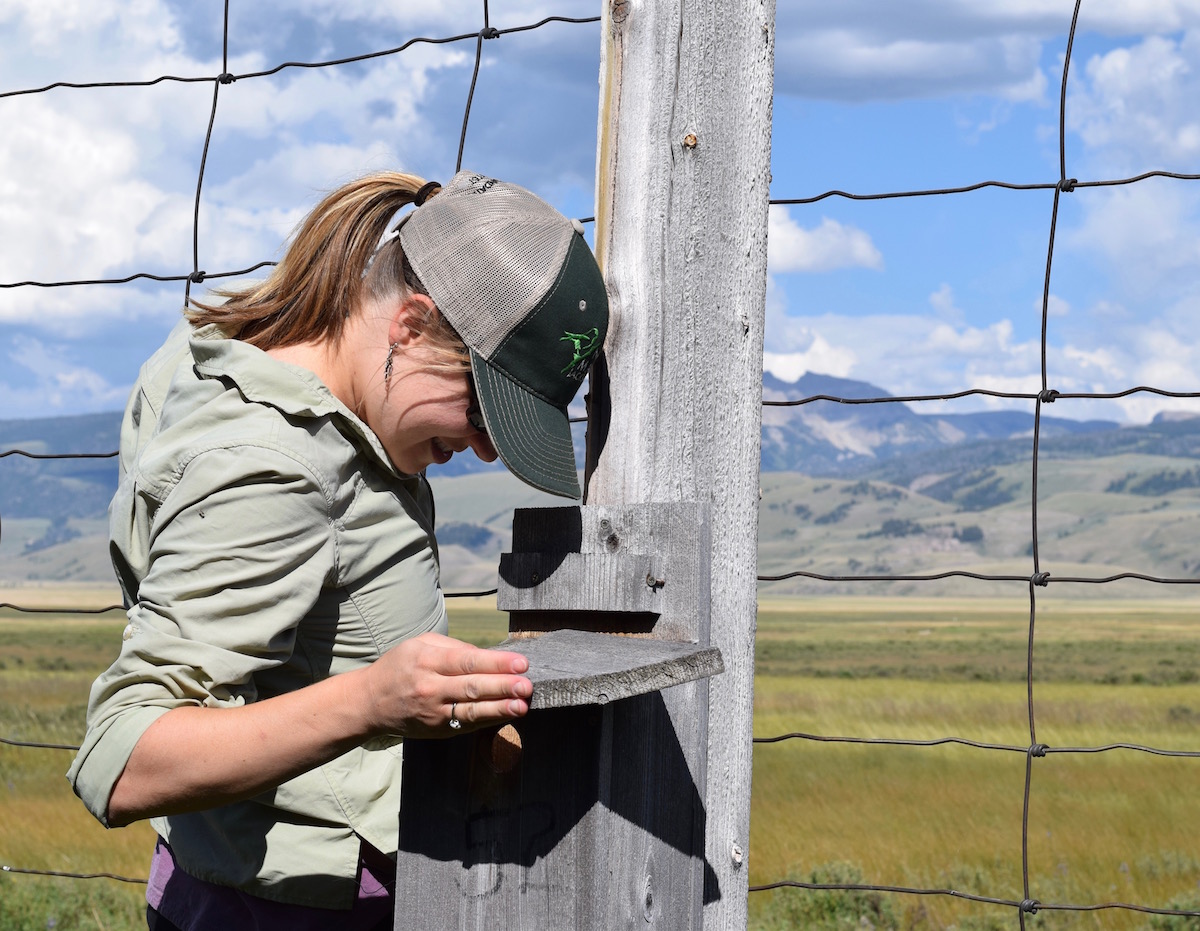
Historically, bluebirds relied on woodpeckers and other cavity-dwellers to provide the majority of their nesting places. They would select abandoned cavities in dead trees or rotten fence posts to raise their families. As development and habitat loss wiped out many of these natural nesting sites, the bluebird population declined dramatically. Fortunately, man-made nesting boxes have played a vital role in their recovery.
With the help of 10 dedicated volunteers, JHWF’s Bluebird Next Box Project monitors 104 mountain bluebird nest boxes along the perimeter of the National Elk Refuge every year, once per week from April through July. Some of the information collected includes dates, number of eggs laid, eggs hatched, birds fledged. These data are entered into the Nature Mapping Jackson Hole database and will also be given to the North American Bluebird Society and Cornell Lab of Ornithology. Data gathered by citizen scientists during nest box monitoring is needed to increase our understanding of the breeding success of the mountain bluebird.
There is a warm and rewarding feeling of regularly checking the bluebirds through their nesting cycle. At JHWF, walking our trail is hardly considered work, but instead a privilege. It is rewarding to know that we are really making a difference.
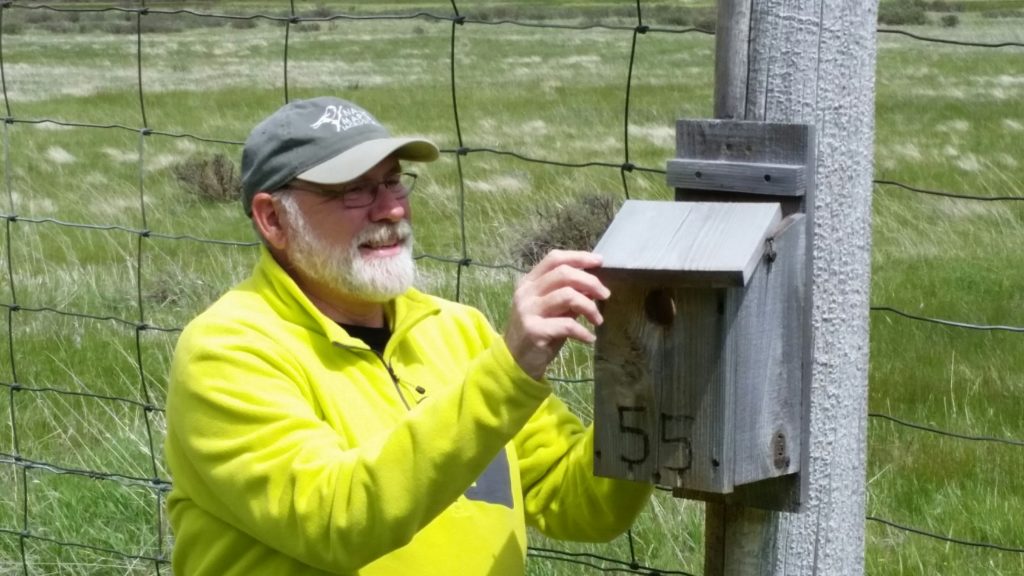
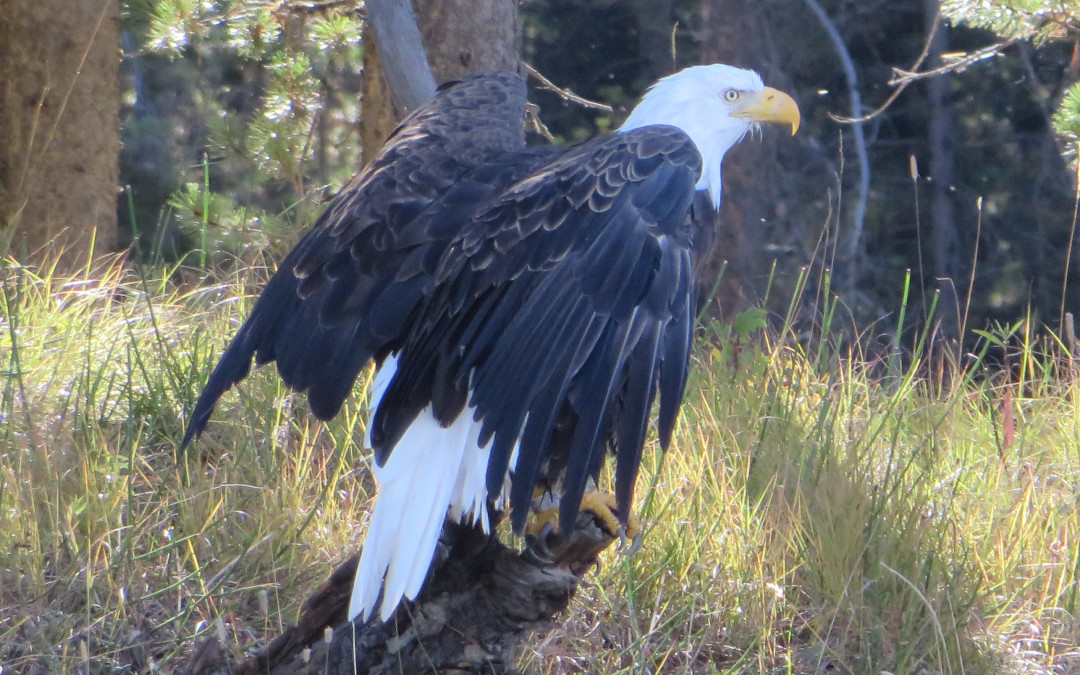
by jhwildlife | May 11, 2016 | Blog, Nature Mapping Jackson Hole
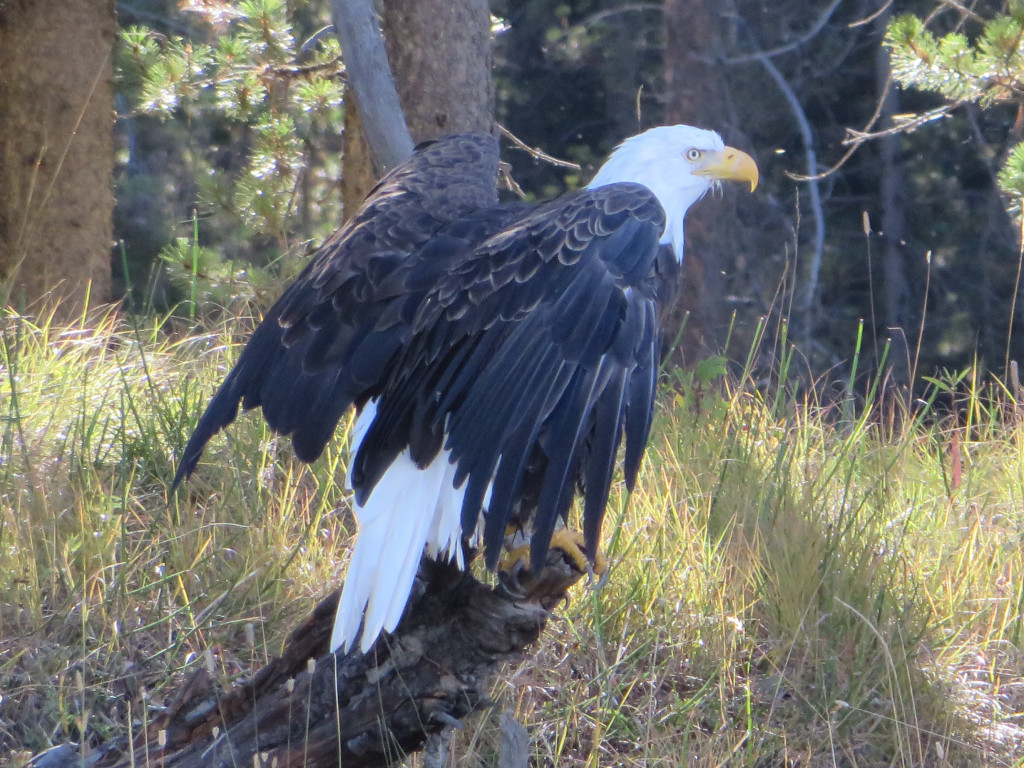
How can you see 458 birds and wildlife in three hours on a Sunday morning in one of the most beautiful locations in the nation without taking a single step? Four words–Snake River Float Trips! This little-known benefit of being a certified nature mapper is in full swing and you can take advantage of it through September.
Generously provided by AJ DeRosa’s Wooden Boat Tours, this adventurous form of citizen science is not all fun and games. Its purpose is to gain a better idea of what species of mammals, birds, and amphibians use the section of river between Wilson Bridge and South Park, which flows mostly through private land where wildlife professionals do not conduct a systematic census.
How do I Sign Up?
Sign up for one of the dates below with the volunteer director of the trips, Tim Griffith at timgrif396@gmail.com. At least one person in your party (max 6) must be a certified JH Nature Mapper and should be the main wildlife spotter and at least one person to be the recorder. The spotter should have at least a basic understanding of the birds and mammals one might see on the Snake River. It costs only $20 to cover the shuttle fees and you’re welcome to tip the guide, if desired.
May 8th Float Trip Report:
The May 8th Snake River Float Trip traveled 8 miles down the river from Rendevous Park to Wooden Boat Adventures River Camp with Kevin Coughlin, Josh Seibel, Carrie Ann Adams, and trip leader (and retired wildlife biologist) Tim Griffith. They mapped 42 species (listed below) with a highlight of spotting 12 bald eagles as there are six nests along this stretch of river and each nest has two adults associated with it.
- Canada Goose 123
- Mallard 49
- Green-winged Teal 5
- Barrow’s Goldeneye 3
- Common Merganser 31
- Double-crested Cormorant 6
- American White Pelican 5
- Great Blue Heron 7
- Turkey Vulture 1
- Osprey 2
- Cooper’s Hawk 1
- Bald Eagle 12
- Red-tailed Hawk 3
- Killdeer 10
- Spotted Sandpiper 28
- Mourning Dove 1
- Belted Kingfisher 4
- Downy Woodpecker 1
- Hairy Woodpecker 1
- Northern Flicker 4
- Black-billed Magpie 2
- Common Raven 12
- Tree Swallow 43
- Bank Swallow 9
- Barn Swallow 4
- Black-capped Chickadee 6
- Mountain Chickadee 1
- Brown Creeper 2
- House Wren 2
- American Dipper 2
- Ruby-crowned Kinglet 2
- Mountain Bluebird 2
- American Robin 19
- European Starling 1
- Yellow Warbler 2
- Chipping Sparrow 2
- Dark-Eyed Junco 2
- Song Sparrow 22
- Green-tailed Towhee 1
- Red-winged Blackbird 2
- Western Meadowlark 1
- Brewer’s Blackbird 12
- Yellow-bellied Marmot 7
- Elk 1
2016 Snake River Float Trips:
MAY: 1st, 8th, 15th, 22nd and 29th
JUNE: 12th and 26th
JULY: 10th and 24th
AUGUST: 7th and 21st
SEPTEMBER: 4th, 11th, 18th and 25th
Photo credit: STEVE MORRISS
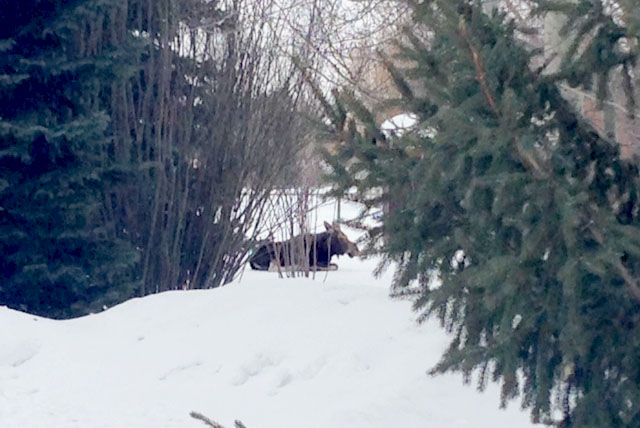
by jhwildlife | Feb 29, 2016 | Blog
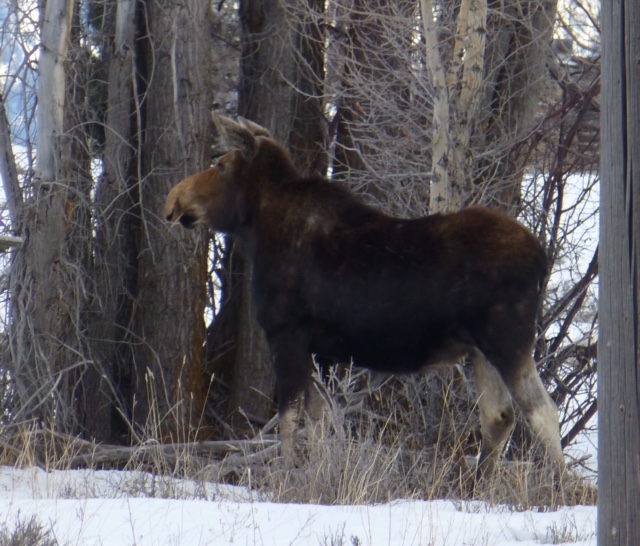
Photo by Nature Mapper Kathy McCurdy on Moose Day
Eighth Annual Moose Day Survey Yields Data Similar to 2015
The eighth annual Moose Day Jackson Hole survey was conducted on Saturday, February 27, 2016 from 7:00 a.m. to 1:00 p.m. in collaboration with the Wyoming Game and Fish Department. 73 volunteers from trained Nature Mapping Citizen Scientists, Wyoming Game and Fish Department and Bridger-Teton National Forest personnel took part spending an estimated 223 hours of volunteer time. 99 individual moose were observed in 58 individual search areas.
“Moose Day is such a fun event, bringing people together around the joy of searching for wildlife,” said Jackson Hole Wildlife Foundation Executive Director Jon Mobeck. “It also serves a scientific purpose. The observation data captured on or near participating private ranch lands and residential neighborhoods supplements population surveys conducted by Wyoming Game and Fish, giving us well-rounded information in order to protect moose in the valley.”
During last year’s survey 97 individual moose were observed by 71 volunteers in 61 individual search areas. Moose numbers via this survey remain flat over the past three years.
“Moose Day is truly a community-wide effort: with 73 volunteers searching for moose by ski, foot, car, and snowmobile on a Saturday morning. We have a good time looking, enjoy swapping moose stories, and above all know we are doing something for the moose we all care about. I thank the volunteers and the landowners who are all part of this Citizen Science inventory,” said Frances Clark, coordinator of Moose Day and volunteer coordinator of Nature Mapping Jackson Hole.


